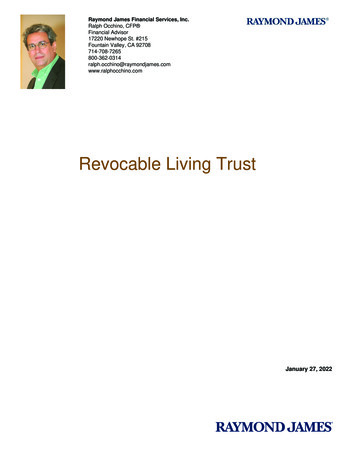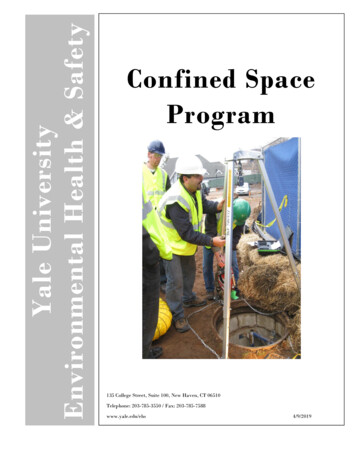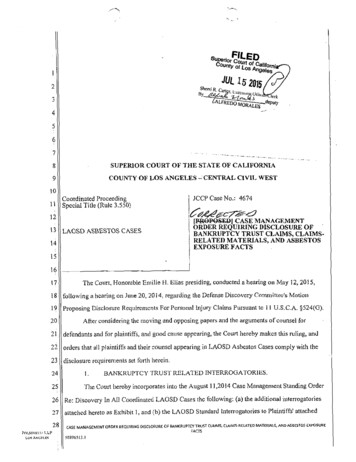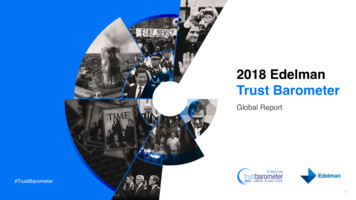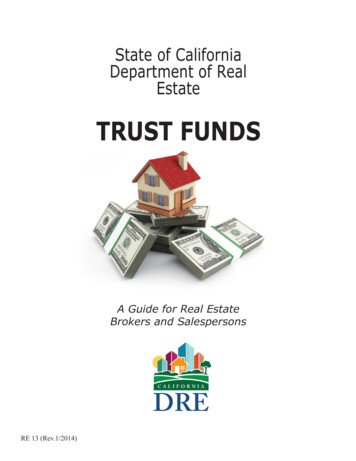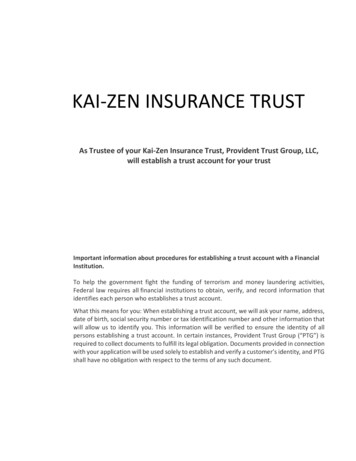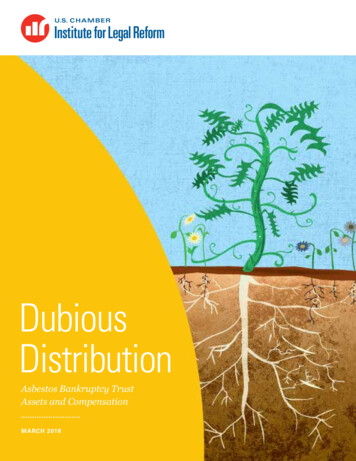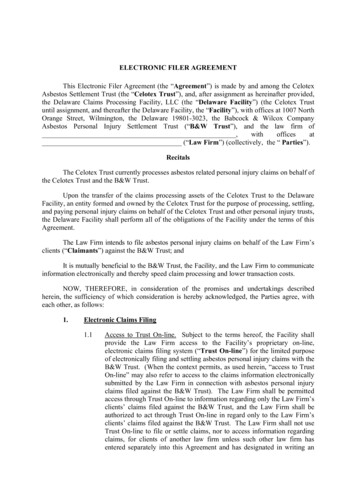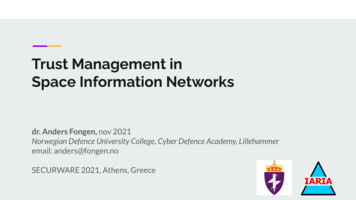
Transcription
Trust Management inSpace Information Networksdr. Anders Fongen, nov 2021Norwegian Defence University College, Cyber Defence Academy, Lillehammeremail: anders@fongen.noSECURWARE 2021, Athens, Greece
Presenter’s bioAnders Fongen Associate Professor, Norwegian Defence University CollegeField of research: Distributed Systems, Networking securityPhD in Distributed Systems, Univ. of Sunderland, UK, 2004Career history 4 years in military engineering education10 years research in defence research (Chief Scientist)8 years in civilian college (Associate professor)11 years in oil industry6 years in electronics industry2
Introduction The evolution of satellite communication? What are the advantages? Very Low Latency (as low as 2 ms)Global coverageInteresting property of a Low Earth Orbit (LEO) system Application Services (“Cloud Computing in Space”)Higher System Complexity (larger state space)Long idle periods (due to inhabited surface) mixed with traffic peaksViewed as a problem of Distributed Computing having a set of distinct properties3
What is a SIN (Space Information Network)? A collection of communicating LEO satellites, called Satellite Endpoints (SE)Able to serve terrestrial/airborne client (CE) Communication services (e.g., IP transport, VoIP, Publish-Subscribe comm.)Discovery Services (DNS, Service Brokering )Storage Services (Content Distribution Network, caching, session states)Application Services (Collaborating editing, Situational awareness )Resource constrained / disadvantagedPredictable workload and link availability“Mobile” system: Stationary clients, mobile infrastructureRapid hand-over of client connection and client state4
Components of a SIN and their relations Satellite Endpoints (SE) Client Endpoints (CE) Any combination of LEO andHEO satellitesClients to the SIN (but may offerservices), on ground or airborneGround Station (GS) Connects the SEs to otherendpoints and resources in theInternet5
SE constellation vs population density6
Population “heat map” under SE footprint7
Protection of services and resources in a SINMutual Authentication and Authorization Control between endpoints on link andapplication layer protects the added value created by the transaction. Credential Management - deployment and revocation of keys and certificates Authentication/Authorization control - bound to a protected communicationsession (link/transport) Happens “now and then” - Delay Tolerant operationMust complete before transaction can start - Delay Sensitive operationCredential Management could take place during idle periods of the orbit8
Credential ManagementWhy are X.509 certificates not chosen? Unnecessary big (bloated and ambiguous data structure)No place to hold authorization infoWhy are the PKIX arrangement not chosen? Certificate revocation was never a good ideaand even worse in a constrained network9
X.509 is replaced by Identity Statement (IdS) Functionally equivalent, but adds authorization informationNo revocation, but intended to be short livedIssued by Identity Providers (IdP), equivalent to Certificate Authority (CA) IdP shared by members of a Community of Interest (CoI)Also a Trust Anchor for members of the same CoICross-CoI authentication is offered by Guest IdS much simpler and more efficient than PKIX Cross CertificatesIdS Owner: RFC-822-name, PublicKey, AuthorizationAttributesValidityPeriod: From, ToIssuer: X.500DN-nameSignatureCross-COI extensions10
Service Invocations with IdS11
Issuing and re-issuing IdS in a SINInteresting problem: Exploits the delay tolerant properties and satellite idle periods1.2.3.Expiration time of and IdS is known.Anyone can ask for a re-issued IdSGround Station (GS) can upload a new IdS to a courier satellite (SE)a.b.c.4.Service endpoint (on Internet) can request an IdS on behalf of the clienta.5.Which SE to choose as a courier?How to make sure that the Client Endpoint (CE) is “connected”?Upload to several SEs to increase the success probability?And pass it along piggybacked on the response messageEven the SE (servicing the CE) can hold the IdS and engage in the protocola.complicates operation and thwarts interoperability12
Conclusion SIN is a natural and expected evolution for satellite networksLots of unsolved and interesting problems e.g., keeping track of IdS issuing and re-issuing of IdSSubject to experimentation on software modelFuture activities modeling av experimentation on other middleware operations DNS, Content Delivery Networks Handover operations and stateful protocolsModeling of simple stateful applications Voice-over-IP Publish-Subscribe distribution13
Norwegian Defence University College, Cyber Defence Academy, Lillehammer email: anders@fongen.no SECURWARE 2021, Athens, Greece. . Anders Fongen Associate Professor, Norwegian Defence University College Field of research: Distributed Systems, Networking security PhD in Distributed Systems, Univ. of Sunderland, UK, 2004 Career history
